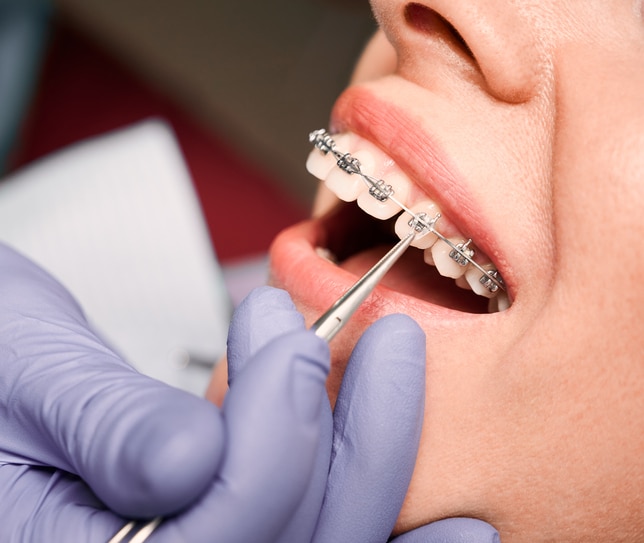How Cumming Orthodontics Addresses Common Braces and Invisalign Worries
How Cumming Orthodontics Addresses Common Braces and Invisalign Worries
Blog Article
Comprehensive Guide to Orthodontics Procedures for Remedying Dental Imbalances
Recognizing the details of each treatment, including their devices, benefits, and prospective drawbacks, is crucial in making notified decisions regarding one's orthodontic treatment. As we navigate through the detailed guide to orthodontic procedures for fixing oral misalignments, the intricate information of each approach will certainly unravel, shedding light on the course toward a unified and useful dental positioning.
Orthodontic Procedures Review

Normal adjustments and tracking are important components of orthodontic therapy to ensure development is on track and to make any needed adjustments along the method. By undertaking orthodontic treatments, clients can not just accomplish a straighter grin but likewise boost their general dental wellness and function.
Conventional Braces: How They Work
When considering orthodontic therapies for oral imbalances, conventional dental braces stand out as a tried and true approach for fixing teeth positioning. Conventional dental braces consist of braces, cables, and bands that function with each other to use constant stress on the teeth, slowly relocating them into the preferred positioning.
One key element of just how typical braces job is the process of bone improvement. As stress is related to the teeth through the braces, the bone surrounding the teeth is improved to sustain the new tooth positions. This remodeling is important for the long-lasting stability of the fixed positioning. Individuals will require normal adjustments at the orthodontist's workplace to ensure the dental braces continue to use the right pressure for reliable teeth motion.
Undetectable Aligners: Disadvantages and pros
Unseen aligners supply a very discreet and hassle-free choice to traditional dental braces for dealing with dental misalignments. These clear, custom-made trays are virtually unseen when put on, making them an enticing option for people seeking a much more cosmetically pleasing orthodontic therapy. One of the primary benefits of undetectable aligners is their removability, enabling much easier maintenance of oral hygiene compared to typical braces. People can eliminate the aligners prior to consuming or brushing their teeth, minimizing the risk of food obtaining stuck in the device and simplifying the cleansing process.

Surgical Orthodontic Options
Surgical interventions in orthodontics present sensible choices for resolving complex dental misalignments that may not be Website successfully dealt with through standard orthodontic therapies. While invisible aligners and conventional braces can fix several orthodontic problems, particular cases require medical treatment to accomplish optimum outcomes. Surgical orthodontic alternatives are typically recommended for extreme malocclusions, substantial jaw inconsistencies, and instances where the underlying bone structure needs alteration to achieve correct alignment.
One common medical orthodontic procedure is orthognathic surgical treatment, which involves repositioning the jaws to correct practical issues such as trouble chewing or speaking. This surgical procedure is often performed in partnership with an orthodontist who assists straighten the teeth prior to and after the procedure. Surgical orthodontics might also entail procedures to reveal impacted teeth, remove excess gum tissue, or reshape the jawbone to create a more harmonious facial profile.
Prior to considering surgical orthodontic choices, individuals undergo an extensive assessment to identify the necessity and prospective advantages of such interventions. cumming orthodontics. While surgery may seem daunting, it can substantially boost both the function and visual appeals of the smile in cases where traditional orthodontic therapies fail
Retainers and Post-Treatment Care

Post-treatment treatment includes adhering to the orthodontist's guidelines vigilantly. This might include appropriate oral health methods, going to follow-up visits, and wearing the retainers as suggested. Failure to adhere to post-treatment treatment directions can cause relapse, where the teeth progressively move back towards their original positions. Consistent retainer wear, good oral health, and normal oral exams are important for maintaining the outcomes accomplished via orthodontic surgical procedure and guaranteeing the lasting stability of the fixed oral alignment.
Final Thought
In conclusion, orthodontic treatments provide numerous options for correcting oral imbalances. Surgical orthodontic options are available for much more extreme misalignments. Generally, orthodontic treatments can effectively boost oral health and visit our website wellness and aesthetic look.
As we navigate with the extensive overview to orthodontic procedures for dealing with oral imbalances, the complex details of each method will certainly unravel, shedding light on the course toward a functional and harmonious oral placement. - cumming special info orthodontist
One of the most typical orthodontic treatments is the usage of braces, which consist of steel braces and cords that apply mild pressure to slowly shift teeth into the preferred placement.When considering orthodontic treatments for dental imbalances, conventional dental braces stand out as a reliable method for dealing with teeth positioning. In addition, invisible aligners might not be suitable for intricate orthodontic problems that require more substantial teeth motion, as they are typically recommended for moderate to moderate situations. Retainers are tailor-made orthodontic tools created to hold teeth in their fixed positions after the completion of orthodontic treatment.
Report this page